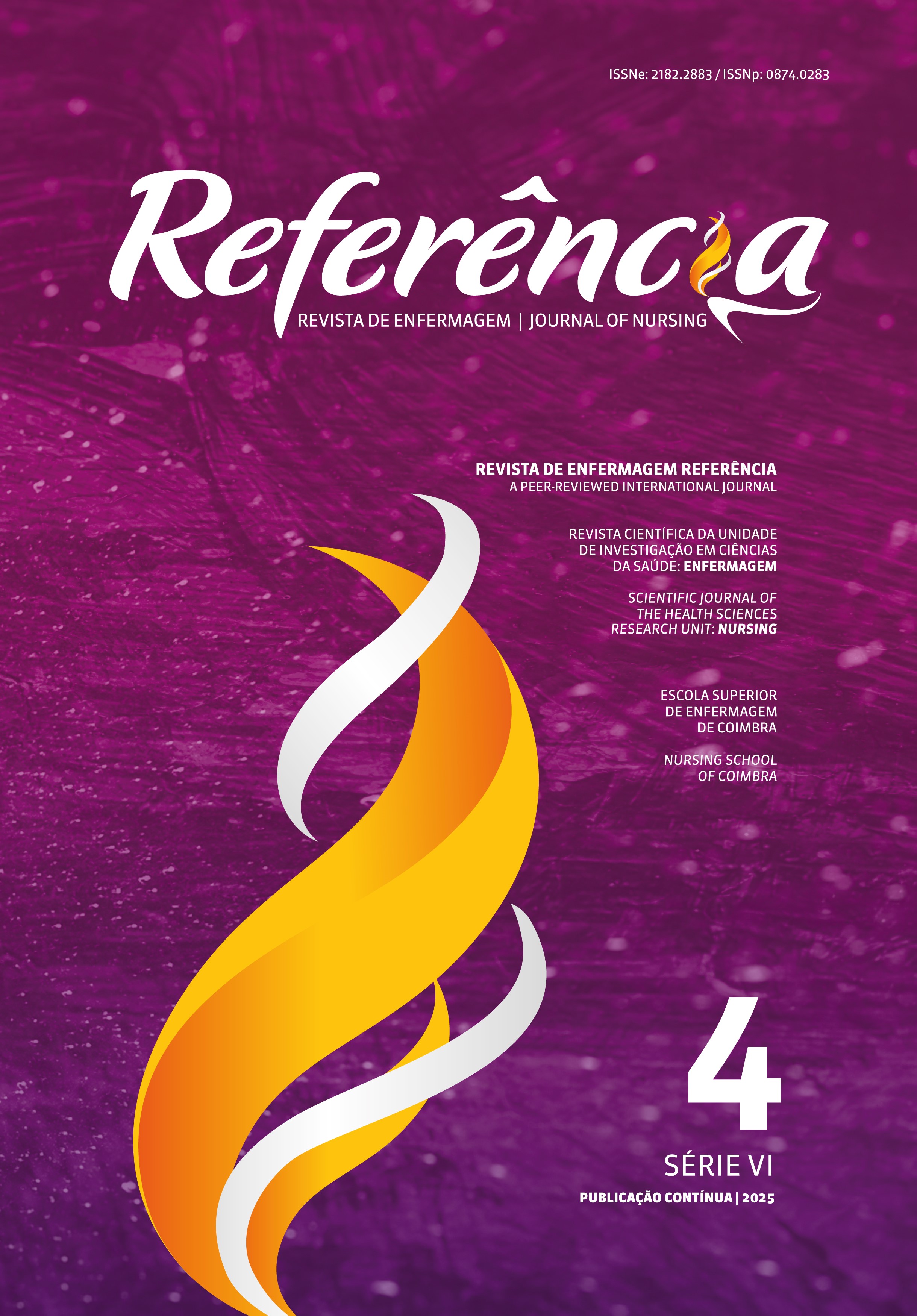The mental health of polytechnic higher education students in the COVID-19 pandemic
DOI:
https://doi.org/10.12707/RV21109Keywords:
mental health, COVID-19, higher education, studentsAbstract
Background: The pandemic significantly changed social and academic routines of higher education students.
Objective: Identify the mental health levels of higher education students and the associated factors.
Methods: Cross-sectional study with a convenience sample of 567 students (mean age 23.92, ± 8.36; 63.8% female), that answered an online survey at the beginning of the second lockdown, which included the General Health Questionnaire (GHQ-28), sociodemographic and academic aspects, and main changes that occurred during the pandemic.
Results: The mean score of the GHQ was 29.18 (±12.99) and the lowest and highest scores were obtained in severe depression (3.55±4.46) and social dysfunction (11.44±3.81). 60.5% indicated risk for mental problems. Participants identifying changes at labor level had better mental health. The ones identifying changes at familiar routines had higher depressive symptomatology and changes in familiar relationships had higher anxiety symptomatology and insomnia.
Conclusion: It is urgent to consider the mental health of students, promoting strategies to minimize the impact of the pandemic, namely in social dysfunction.
Downloads
References
American College Health & Association National college health assessment III. (2020). Undergraduate student reference groupexecutive summary: Executive summary: Spring 2020. https://www.acha.org/documents/ncha/NCHA-III_SPRING-2020_UNDERGRADUATE_REFERENCE_GROUP_EXECUTIVE_SUMMARY-updated.pdf
Cao, W., Fang, Z., Hou, G., Han, M., Xu, X., Dong, J., & Zheng, J. (2020). The psychological impact of the COVID-19 epidemic on college students in China. Psychiatry Research, 287, 112984. https://doi.org/10.1016/j.psychres.2020.112934
European Agency for Safety and Health at Work. (2021). Telework and health risks in the context of the COVID-19 pandemic: Evidence from the field and policy implications. https://osha.europa.eu/en/publications/telework-and-health-risks-context-covid-19-pandemic-evidence-field-and-policy-implications
Farnell, T., MatijeviĆ, A., & Schmidt, N. (2021). The impact of COVID-19 on higher education: A review of merging evidence. https://doi.org/10.2766/069216
Goldberg, D. P., & Hillier, V. F. (1979). A scaled version of the General Health Questionnaire. Psychological Medicine, 9(1), 139–145. https://doi.org/10.1017/s0033291700021644
Hashemian, A., Direkvand-Moghadam, A., & Direkvand-Moghadam, A. (2015). Predictive factors for general health status in Iranian university students an univariate and multivariate logistic regression analysis. International Electronic Journal of Medicine, 4, 6–10.
Instituto Nacional de Saude Doutor Ricardo Jorge. (2020). Saúde mental em tempos de pandemia COVID-1: Dashboard. https://sm-covid19.pt/dashboard/
Kitzrow, M. (2003). The mental health needs of today’s college students: Challenges and recommendations. NASPA Journal, 41(1), 165-179. http://ccvillage.buffalo.edu/wp-content/uploads/sites/74/2017/06/NASPA-Mental-Health-Needs-of-College-Students.pdf
Lee, J., Jeong, H., & Kim, S. (2021). Stress, anxiety, and depression among undergraduate students during the COVID-19 pandemic and their use of mental health services. Innovative Higher Education, 46, 519-538. https://doi.org/10.1007/s10755-021-09552-y
Li, L., & Wang, S. (2020). Prevalence and predictors of general psychiatric disorders and loneliness T during COVID-19 in the United Kingdom. Psychiatry Research, 291, 113267. https://doi.org/10.1016/j.psychres.2020.113267
Maia, B., & Dias, P. (2020). Ansiedade, depressão e estresse em estudantes universitários: O impacto da COVID-19. Estudos de Psicologia, 37, e200067. http://dx.doi.org/10.1590/1982-0275202037e200067
Nogueira, M., & Sequeira, C. (2020). Preditores de bem-estar psicológico em estudantes do ensino superior. Revista ROL de Enfermaria, 43(1), 356-363.
Nogueira, M., & Sequeira, C. (2017). A saude mental em estudantes do ensino superior: Relacao com o genero, nivel socioeconomico e os comportamentos de saude. Revista Portuguesa de Enfermagem de Saúde Mental, 5(Spe.) 51-56. http://dx.doi.org/10.19131/rpesm.0167
Pais-Ribeiro, J., Neto, C., Silva, M., Abrantes, C., Coelho, M., Nunes, J., & Coelho, V. (2015). Ulterior validaçao do questionário de saúde geral de Goldberg de 28 itens. Psicologia, Saúde & Doenças, 16(3), 278-285. http://dx.doi.org/10.15309/15psd160301
Pires, M., Fonseca, C., Joao, R., & Santos, M. (2021). COVID-19, confinamento e teletrabalho: Estudo qualitativo do impacto e adaptacao psicologica em dois estados de emergencia. Investigação Qualitativa em Saúde: Avanços e Desafios, 8, 26-34. https://doi.org/10.36367/ntqr.8.2021.26-34
Romeo, A., Benfante, A., Castelli, L., & Di Tella, M. (2021). Psychological distress among Italian University students compared to general workers during the COVID-19 pandemic. International Journal of Environmental Research and Public Health, 18(5), 2503. https://doi.org/10.3390/ijerph18052503
Ware, J., Manning, W., Wells, K., Duan, N., & Newhouse, J. (1984). Health status and the use of outpatient mental health services. American Psychologist, 39(10), 1090–1100. https://doi.org/10.1037//0003-066x.39.10.1090
World Health Organization. (2003). Investing in mental health. https://apps.who.int/iris/handle/10665/42823
World Health Organization. (2012). Risks to mental health: An overview of vulnerabilities and risk factors: Background paper by WHO Secretariat for the development of a comprehensive mental health action. https://www.who.int/mental_health/mhgap/risks_to_mental_health_EN_27_08_12.pdf
YoungMinds. (2020). Coronavirus: Impact on young people with mental health needs. https://www.youngminds.org.uk/about-us/reports-and-impact/coronavirus-impact-on-young-people-withmental-health-needs/






















